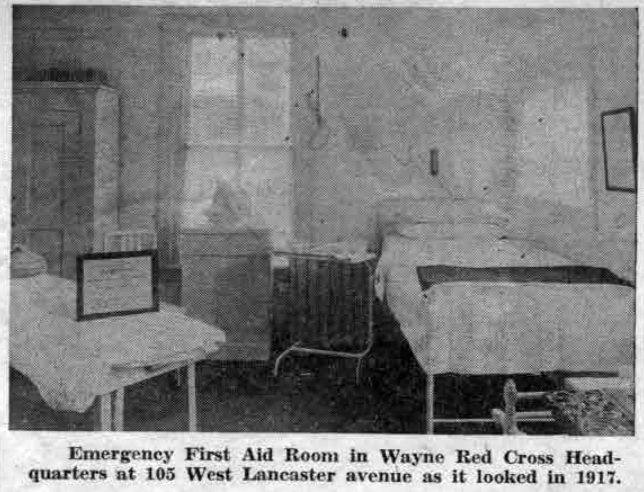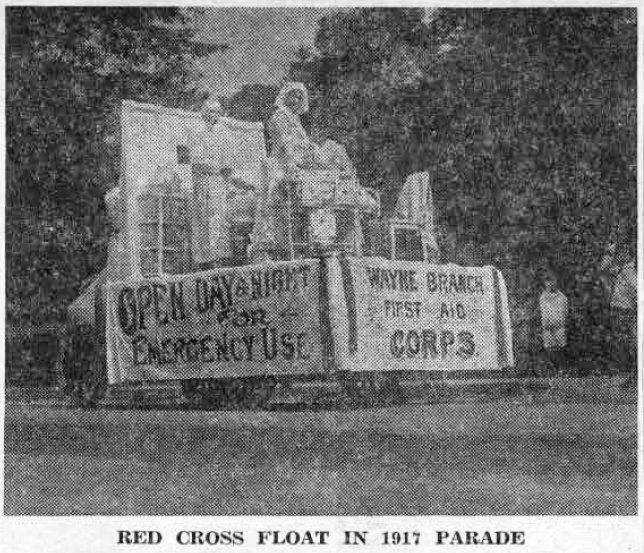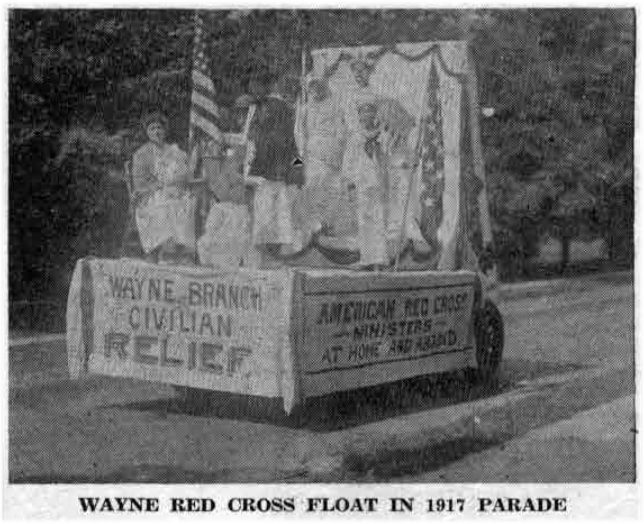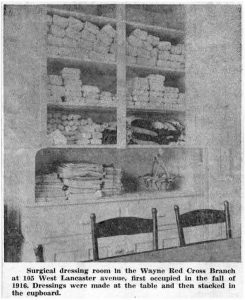 As stated in “Your Town and My Town” last week, the Wayne Branch of the American Red Cross was the pioneer among the Philadelphia area Red Cross groups to set up an emergency first aid room. According to the first minute book of the branch, “this Emergency Room is expected to be open day and night for the benefit of any who may need it.”
As stated in “Your Town and My Town” last week, the Wayne Branch of the American Red Cross was the pioneer among the Philadelphia area Red Cross groups to set up an emergency first aid room. According to the first minute book of the branch, “this Emergency Room is expected to be open day and night for the benefit of any who may need it.”
As shown in the picture at the head of this column, this room was evidently a very pleasant one, and quite as adequately furnished for its purposes as any hospital room would be. The old minute book records that this was done under the direction of Mrs. Robert G. Wilson, who contributed the hospital bed and bedside table, large cupboard, chairs and small gas stove. All this is particularly interesting in view of the fact that, with all of the emphasis placed on first aid during the second World War, there was still no attempt at this later period to establish such a room for a local emergency. Incidentally, this emergency room had no connection with the first aid classroom of World War I.
Highlights of the activities of the Wayne Red Cross Branch in its very early days have been listed in a brochure, material for which was assembled by Miss Grace Roberts for the opening of the present Red Cross headquarters Party in November, 1941. Among the outstanding accomplishments of the 1915-17 period were the endowment of a bed, in 1917, in the American Ambulance Hospital in Paris, in the name of the Wayne Branch.
There was the presentation of an ambulance for use at the front lines at about this same time. The very first gift of money from the Branch went to Queen Elizabeth of Belgium, for Christmas presents for destitute children in that country, in December, 1916. The Branch’s first gift box went to Soissons, France, packed with knitted garments, surgical dressings and comfort pillows, and, not to forget those Americans who were defending our own borders, many blankets were sent to soldiers stationed on the Mexican border.
This lists but a few of the accomplishments of a rapidly growing group, organized in 1916 for wartime relief. Soon auxiliaries supplemented the work of the main group. The first of these was started at the Cathcart Home in Devon, later ones at Wayne Presbyterian Church, St. Katharine’s Church, Wayne Methodist Church, the George W. Childs Library (of Wayne), Devon Manor School and Strafford Grammar School, in addition to groups from Mount Pleasant and from the Miller Memorial. All these small organizations combined their efforts with those of the Wayne Branch of the American Red Cross to meet the emergency demand or World War I.
(To be Continued)



